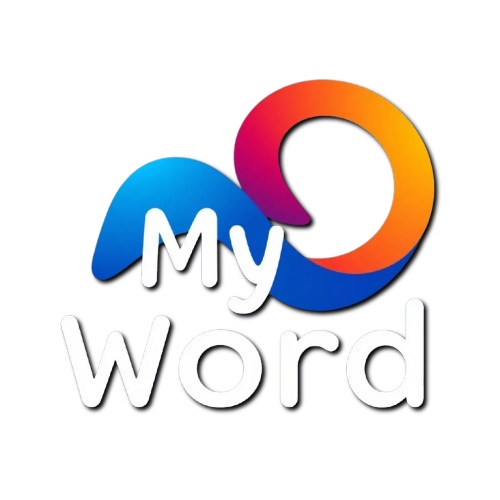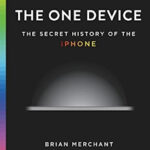For someone born in the 80s, the nostalgia of using a cassette player once again is far too strong, especially if you have a collection collecting dust in a cabinet. In case it’s not clear already, then the only reason I bought this player was to digitize the treasure trove of memories embedded in some of the cassettes, not the songs that can be found on streaming services but the self-recorded and obscure ones. However, on the practical front, this player was intended for my parents who wish to have an easy way of re-listening to their specific choice of music which includes regional ones that can’t be found in a digital format anymore.
The unit is quite compact and meant to be portable, though at 2.8 kg, it is on par with bulky laptops. It has a collapsible handle up top and support for on-the-go usage through 6 R14 cells. It also comes with a remote, though its usage is mainly limited to controlling CD tracks and the recording functions. To go in to further details, I decided to breakup this review in to various pertinent sections. Since this is first and foremost a music player, I think I should start with the sound quality.
A. Sound Quality: The sound quality is definitely not something to write home about but once you temper your expectations for the price you are paying, it is certainly decent. It will not hold a candle to any home sound system nor can it fulfil the role of a party boom box. However, it can certainly form an integral part of your home entertainment setup, especially as an input source.
The 2 x 1W RMS speaker output is certainly loud enough to fill up a decent sized room and its quality should meet the expectation of any non-discerning listener. It comes with Dynamic Bass Boost (DBB) which I presume is primarily aimed at countering Sony’s Mega Bass. Its difference can certainly be felt as it significantly boosts the lower frequencies and can enliven beat heavy music. However, at the same time it boosts the volume which unfortunately may be construed as a “better effect” by most. But that is definitely not the case for all genres of music as it significantly muddies up instrumental and vocal songs. Hence, I would advise judgement when using this setting as it will depend largely on personal preference.
Fortunately, the player comes with a Headphone jack at the back, so you can plug in a speaker system of preference or keep the tunes to yourself if you so desire and enjoy a much higher quality experience.
B. Input Sources: The input source is controlled using a sliding switch and has the following options:
B1. Tape: By default, the player is in the ‘Tape’ mode because it also happens to be the ‘Off’ mode. This intertwining of functions can cause some issues which I have described later in the ‘Recording/Ripping section. However, the thing to note is that the tape has its own set of mechanical controls and hence is unaffected by the controls on the remote. Although all my cassettes are now decades old, they played quite well out of the box. At a time when we are used to skipping in discrete steps of 5 or 10 seconds, it was fun to use the analogue fast-forward/rewind functions once again. The rewinding/forwarding speed is much higher than the play function, which might be desirable considering that patience is a rarer virtue these days compared to when the cassette was invented.
B2. FM: Considering the fact that most high-end phones have dropped support for FM radio, having a FM player at home feels like a novelty. Having the mediumwave (MW) and shortwave (SW) options to go along with FM would have been cool but considering that the frequency of people tuning in to radio (see what I did there!) has declined, the practicality of not having them is understandable. Depending on how you see it, the presence of the old school manual tuner can be seen as a blessing or a curse. As with the manual volume controls, the inaccessibility of switching channels using a remote might be irksome for many. On the flip side, the unit has a rather long antenna which measures about 31 inches when extended and 9 inches when retracted to fit at the back of the player. This certainly ensures unparalleled coverage within the confines of the walls of the house.
B3. USB: A music player wouldn’t be one if it didn’t support MP3 files, so this one supports it too. Playback for 320 Kbps files work fine and it is supposed to have support for WMA v9, but other popular file formats like AAC are not supported. This mode can also be used to playback any recorded files, but the order of playback is such that is first plays the files stored directly on the pen drive followed by the ones stored in folders. While SD cards are not supported directly, even cheap card readers work fine with the device. As far as file formats go, FAT32 is the only logical option.
B4. CD: This is the top most option on the source switch but definitely not the last accessible input source (see next). Being a digital source, like USB, it can be controlled using the remote which is mainly limited to skipping tracks and pausing/stopping.
B5. Auxiliary: This option is not present on the source switch but is visible as “AU” on the display as soon as you connect the headphone jack of a device to the ‘MP3-Link’ switch at the back of the unit.
C. Recording/Ripping: Since this happens to be one of the USPs of this device and also the source of much discontentment among buyers who fail to get it to work properly.
On the face of it, the recording process is the same irrespective of the source.
a. Press the ‘USB Rec’ to the left of the display or the ‘Rec’ button on the remote to start recording
b. Press the ‘Stop’ button to the left of the display or on the remote to stop recording
However, the major source of confusion arises because of two aspects:
a. The actual recording begins 7 secs after the press of the button when the “RIP” symbol starts blinking on the display
b. The mechanical cassette controls are independent of the digital ones used for the recording
Thus, I feel the process needs to be further elucidated:
C1. Cassette digitization: This happens to be the trickiest of all due to the fact that the cassette player works independently of the digital controls present on the player as well as the remote. The method I found to be most convenient is as follows:
a. Play (FF/RW) the cassette till the beginning of a song and press the ‘Pause’ button on the cassette control panel. The player allows both the Play and the Pause button to be depressed at the same time.
b. Start the recording using the ‘USB Rec’ button on the player or ‘Rec’ button the remote and wait about 6 seconds.
c. Release the ‘Pause’ button on the cassette controls just as the ‘RIP’ symbol begins to flash. This indicates that the transfer of music from the tape to the USB device has started.
d. If you don’t wish to separate tracks later, then stop the recording at the end of each track using the digital ‘Stop’ button to the left of the display or on the remote while simultaneously pressing the ‘Pause’ button on the cassette control panel. You have to repeat the procedure for each track on the cassette.
e. It is important to note that the ‘Tape’ and ‘Off’ modes are one and the same as far as the source switch is concerned. Hence, allowing the tape to auto stop results in the player being switched off immediately. This causes the file being written on the USB drive to be lost. Hence, you should make it a point to use the digital ‘Stop’ button whenever you wish the file to be written and this should be before the tape auto stops.
C2. CD Ripping/Copying: This is the most futile feature of the device since the resulting MP3 files are of only 128 Kbps constant bit rate. This works fine for cassettes as the quality is comparable but it is an abomination as far as CDs are concerned. Moreover, the ripping is being done in real time as against the faster speeds achievable on computer CD drives. The saving grace is that the 7-sec recording lag doesn’t impact CD ripping as being a digital source, the player is able to hold the playback till the recording begins.
In case you are using a MP3/WMA CD, it simply copies the files to the USB drive which is again pointless since you can copy the files much faster on a PC. Also, for some strange reason it allows the CD to be ripped to a cassette. Figure that out!
C3. Radio recording: As with the CD, you can record to a pen drive or a cassette. However, you must remember that the actual recording will start 7 seconds after you press the recording button, so capturing something as you hear it is out of the question.
To sum it up, apart from digitizing of cassettes, the recording/ripping function isn’t of much use due to the low quality (128 Kbps) and the 7-sec lag to the start of a recording. The recorded files are numerically organized in sub-folders within a ‘RECORD’ folder on the USB drive as ‘CDREC_XX’ for CD Ripping, ‘COPY_XX’ for CD Copying and ‘LINE_IN’ for cassette and radio recordings.
D. Price: I have kept Price as the last parameter because I think the device is totally worth it, as long as you are not paying the MRP of INR 5199. I purchased it for INR 4799 along with a 15% cashback offer on Amazon which puts it effectively at INR 4079. At that price, this device justifies its value in memories.



